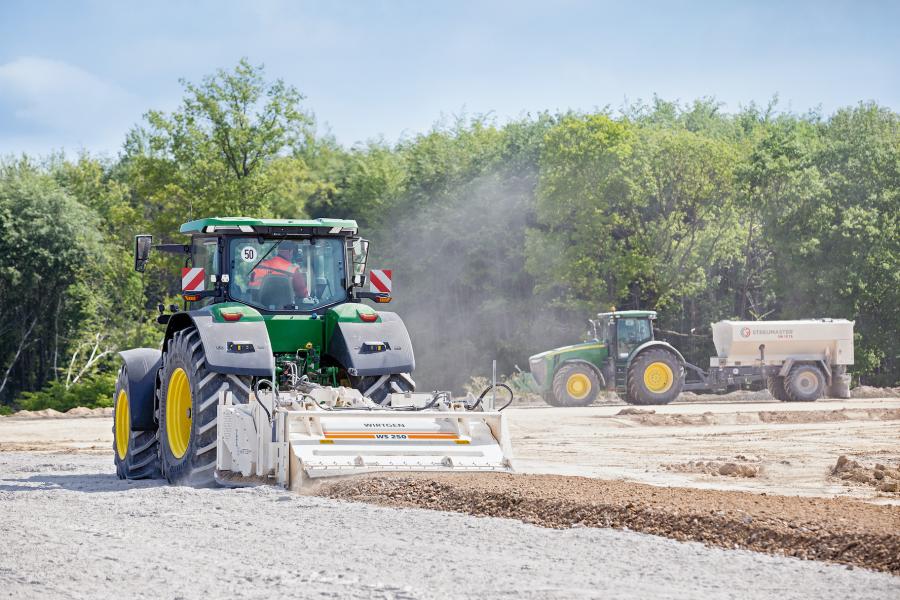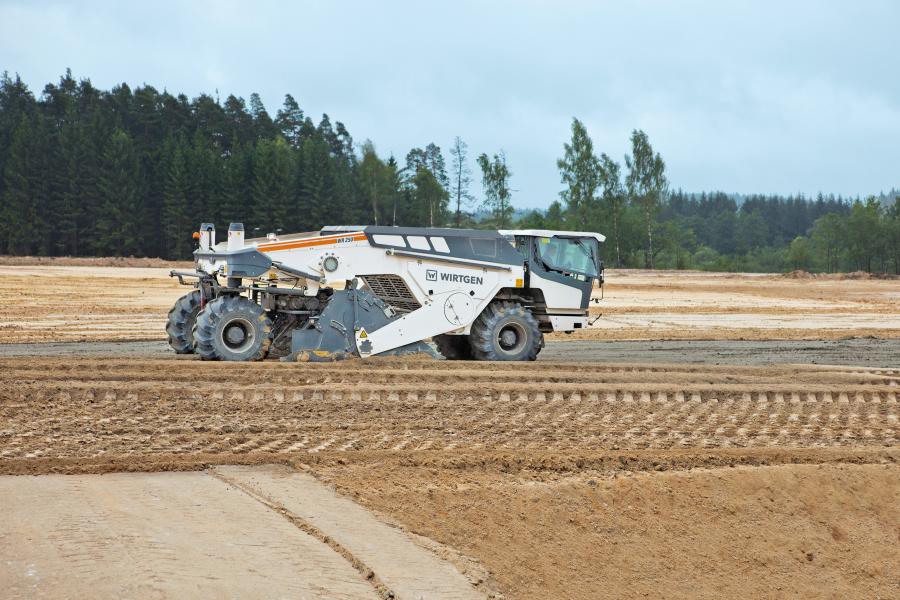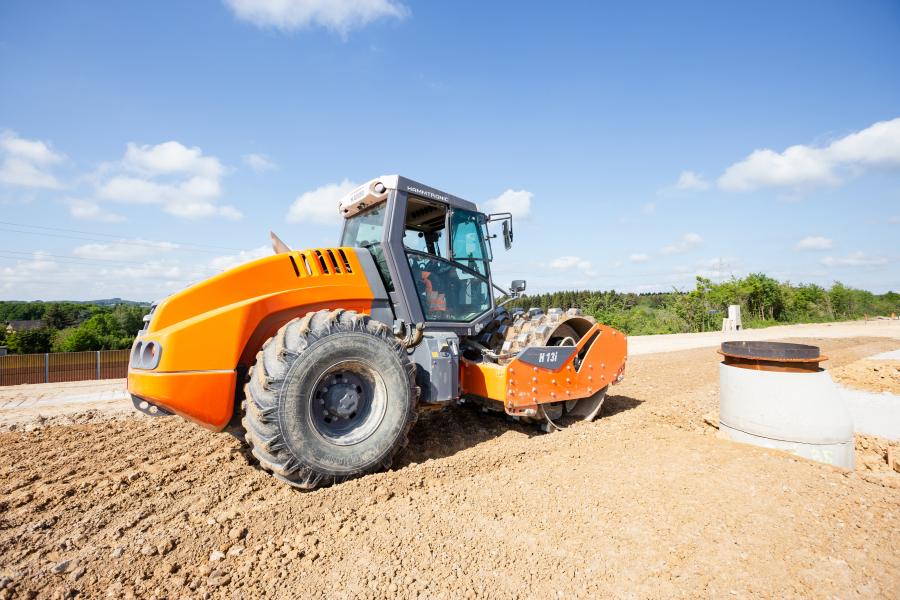
Wed January 20, 2021
Wirtgen
Soil stabilizing is a particularly cost-effective and resource-friendly method for achieving the proper bearing capacity and quality of the soil and preparing it for civil engineering or building construction projects. In order to permanently improve the soil's properties, a series of machines are usually required. Depending on the application, this can include a binding agent spreader, a soil or tractor-towed stabilizer, a grader and soil compactors.
The Perfect Recipe
In order to prepare the more than 95,679 sq. yd. site for development in North Rhine-Westphalia/Germany, the earthworks activities included raising the site's ground level by up to 32.8 ft.
In the process, several hundred thousand cubic meters of soil had to be stabilized and consolidated layer by layer. The binding agent for the soil with a low bearing capacity was defined as 10 kg/m² lime-cement mixture. While lime improves the ability to pave over and consolidate the wet, cohesive soil, cement permanently increases its bearing capacity, volume stability, and resistance to water and frost.
Outstanding Mix Quality
First, binding agent spreaders from the Wirtgen Group's system partner Streumaster precisely pre-spread the mixed binding agent. Wirtgen soil stabilizers were responsible for homogeneously mixing in the binding agents.
All-wheel-drive soil stabilizers like the WR 250 were used for this process — which, with 766 PS, a working width of 7.8 ft., and a working depth of 22 in., is particularly suitable for such large-scale jobs. As such, the high-performance WR 250 can achieve daily rates of between 7,176 and 14,352 sq. yd.

In addition to soil stabilization, Wirtgen's WR 250 also is used as a mobile cold recycler in road rehabilitation.
A WS 250 tractor-towed stabilizer, also known as a stabilizing or tractor-towed milling machine, also was used.
Unlike the self-propelled machines in the WR series, the WS 250 requires a traction vehicle to mix soils up to 19.7 in. deep across a working width of 8.2 ft. — in this case, a John Deere 8R 370 tractor from the new 8R series.
It only takes a few simple steps to attach the WS 250 to the tractor using the standardized three-point hitch, and it is then immediately ready for use, according to the manufacturer.
Using their powerful milling and mixing rotors, Wirtgen soil stabilizers and tractor-towed milling machines jointly mixed the binding agents into the soil at a depth of 40 cm, transforming it layer by layer into the desired high-quality, homogeneous soil-binding agent mixture.
Consolidating with the Right Technology
For final consolidation, the contractor relied on powerful compactors from Hamm's H series. The compactors owe their excellent off-road performance to the 3-point swivel joint which, together with the large bank sloping angles at the front and rear, also makes the compactors highly maneuverable and stable.

In addition to impressive compaction force, Hamm's H series of compactors also stand out for their simple Easy Drive operating concept and an operator's cabin with excellent all-round visibility.
Since the most effective way to consolidate cohesive soil is to use compactors with padfoot drums, an H 13i P initially took the lead on site. With its trapezoidal pad feet on the drum, the roller left deep impressions in the soil, which could then dry out better due to the increased surface area. After graders had leveled the soil, H series compactors took over again, this time with smooth drums. They were responsible for the final compaction of the stabilized soil and its ultimate stiffness.
For more information, visit www.wirtgen-group.com.
This story also appears on Construction Equipment Guide.
 Agricultural Equipment
Agricultural Equipment Articles
Articles Email Signup
Email Signup Sell Your Machines
Sell Your Machines

 Agricultural Equipment
Agricultural Equipment Agricultural Dealers
Agricultural Dealers Agricultural Articles
Agricultural Articles Email Signup
Email Signup Sell Your Machines
Sell Your Machines